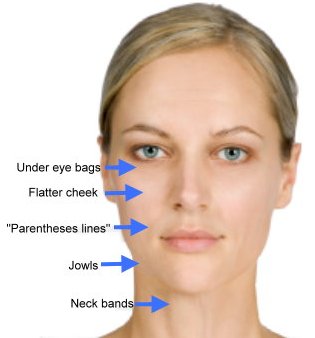Cosmetic Eyelift Surgeries
As an oculoplastic surgeon, Dr. Amiya Prasad has a keen awareness of the different concerns people may have with how cosmetic eye surgeries may affect their skin. Many of these concerns often have to do with race, gender, and skin type.
Some examples include: Asian patients who seek naturally appearing eyelid folds may worry about looking too “Europeanized”; male patients may worry about their eyes looking too feminine after blepharoplasty surgeries; patients with darker skin color may also worry about the formation of keloids (raised scars) after the procedure, or may worry about permanent pigmentation changes in their skin.
With decades of experience of eyelid surgery among different ethnicities, Dr. Prasad anticipates these concerns, so he developed methods and techniques to avoid these classic mistakes that even some of the best surgeons can make.
Contact Dr. Amiya Prasad to discuss your facial cosmetic surgery options or to inquire about any additional information you need about the services offered at his New York City and Long Island offices. Our staff will be happy to assist you with hotel accommodations and travel arrangements in New York City or Garden City, New York if needed. Please note, that we have several members of our staff who are fluent in Spanish should this be desired.
Cosmetic eye lift surgery by Oculoplastic surgeon Dr. Amiya Prasad is not a “one-shape-suits-all” procedure. His approach to cosmetic eye lift surgery is as diverse as his patients, with surgical decisions influenced by the patient’s age, genetic predispositions, gender, race, health condition, and personal preferences.
In addition to the individual variations in people, it is important to note that some may want a certain look that is not inherent to their particular background, but they still find desirable. For example, some women find the most desirable eye shape to be an almond-shaped eye because of its exotic appearance, but this feature is not for everyone.
The end result of the cosmetic eye lift surgery procedure by Dr. Prasad is the consensus between him and the patient of what will look best for an individual’s face.
Dr. Prasad’s specialized approach for people of color minimizes their two main problems requiring special consideration — avoiding the formation of keloids (raised unattractive scars) when their skin heals and also reducing the tendency to have long-lasting skin color changes when they heal.
Another feature given consideration for persons of color is they may have more prominent eyes with deeper creases. In this situation, the upper eye lift surgery has to be adjusted for the height of the eyelid, so the amount of skin removed has to be reduced.
Let us help you to regain a natural and youthful appearance so you can look your best! Our staff would be happy to assist you with hotel accommodations and travel arrangements in New York City or Garden City, New York if needed. Please note, that we have several members of our staff who are fluent in Spanish should this be desired.
As the world of business continues to become more youth-oriented and competitive, men are realizing that they need to project a powerful and energetic image to keep up with faster-paced change. With the media’s focus on appearance, many men recognize that physical appearance can translate into better chances for professional and social success.
Since the eyes are a focal point of the face, their shape and appearance weigh heavily when someone determines if a person looks reliable, hardworking, creative, and dynamic.
For professional reasons, many men turn to eye lift surgery to give them a more youthful appearance. However, many surgeons can make the mistake of “feminizing” the eyes. An experienced specialist such as Dr. Prasad knows how to alter his surgical approach so that a man’s blepharoplasty (eye lift surgery) retains a masculine appearance.
Asian eyelids are different from Caucasian eyelids in many ways. One of the most frequent mistakes plastic surgeons can make is “Americanizing” or “Europeanizing” the Asian eyelid, which results in a very unnatural appearance. Dr. Prasad uses his expertise in double eyelid surgery to provide Asian patients with a natural-looking eyelid fold, as if they were born with them. Whether an incisional or non-incisional approach is used for Asian double eyelid surgery, Dr. Prasad preserves their ethnic appearance while allowing them to have a defined upper eyelid to enhance their features, and preserve the unique character of their eyes.
What is Eye Lift Plus?
Eye lift plus is the artful enhancement of other areas of the face in a minimally invasive way to create a more youthful appearance.
As a leading eye lift specialist and Oculoplastic surgeon, Amiya Prasad, M.D. observed that many clients often requested for additional facial enhancement procedures after having an eye lift. Human nature often magnifies and focuses on particular things we don’t like, such as bags under the eyes, so we may not notice other problem areas until the under eye bags are corrected.
Keep in mind that when people look at you, they’re looking at the whole picture of your face, and not just one area such as under your eyes. This means you can be perceived as older or tired if one area of the face looks more worn than other areas. So the goal of Eye Lift Plus is to help people treat other problem areas, while addressing the main negative of drooping eyes or puffy under eye bags.
As a facial cosmetic surgeon with an artistic approach to surgery, Dr. Amiya Prasad can restore a natural balance to the face by creating beautiful eyes and restoring volume in areas where volume is lost. Dr. Prasad also sculpts fat from the places where it’s undesirable, such as the jowls, chin area or rounded cheeks areas, which enhance the eye lift procedure further.
Eye Lift Plus Examples
In our practice we routinely perform procedures which overlap with the healing process of an eye lift. Some examples are:
- Eye lift plus Vampire Facelift®
- Eye lift plus neck and jowl liposuction
- Eye lift plus submalar or cheek implants
- Eye lift plus Radiesse, Sculptra, platelet-rich fibrin matrix in the cheeks
- Eye lift plus fractional CO2 laser for the lower yelids
- Eye lift plus lip enhancement with Restylane, Juvederm or Alloderm
- Eye lift plus Restylane, Radiesse or Fat transfer to the parentheses lines (nasolabial folds)
- Eye lift plus buccal fat removal
Choosing the Right Cosmetic Surgeon for Eye lift Surgery
Amiya Prasad, M.D. is Board-certified in Facial Cosmetic Surgery and a Diplomate of the American Board of Cosmetic Surgery (ABCS) and a Fellow of The American Society of Oculofacial Plastic and Reconstructive Surgery (ASOPRS). This means that he has special training in eye microsurgery, as well as in cosmetic surgery of the eyelids and the orbit (the bones that surround the eye).
There are only about 500 specialists worldwide who are members of ASOPRS, which is an exclusive professional society with highly stringent criteria for membership. Dr. Prasad is widely renowned for his expertise in eyelid and orbital surgery. and is a world-renowned specialist for primary and revision eyelid surgery.
For people faced with the tragic loss of an eye from accident, trauma, tumor, or infection, Oculoplastic surgeon Amiya Prasad, M.D. can perform artificial eye surgery using the latest biomaterials such as hydroxyapatite to create a functionally appearing eye.
Common Reasons for Artificial Eye Surgery
- Injury /physical trauma to the eye
- Infection of the eye
- Disease / eye tumors
- Glaucoma
What to Expect During Artificial Eye Surgery
Artificial eyes are ocular prostheses made from cryolite glass or plastic acrylic. Dr. Prasad uses the latest biomaterials, such as hydroxyapatite, to create aesthetically pleasing and functional-appearing artificial eyes. Hydroxyapatite is a naturally occurring substance that is very well accepted by the body. State-of-the-art implants are available to match precisely to the functioning eye.
During artificial eye surgery, the eye muscles are attached to prosthesis implant. It does not restore vision to the wearer, although there are existing types of ocular prostheses that can. Surgeons are able to coordinate the movement of the artificial eye with the functioning eye, however, expect that the movement of the artificial eye will not feel as fluid or have the same range of motion as the natural eye.
It is important to note that even though the pupil area of the artificial eye may appear similar in color to your existing eye, the pupil will not react as it normally would when there is a change in light.
After Artificial Eye Surgery
Oral antibiotics and antibiotic eyedrops may be prescribed as maintenance treatment after artificial eye surgery, but this will depend on your surgeon.

If you’ve had eyelid surgery in the past and are unhappy with your results, you may feel you had bad plastic surgery.
As an expert in eyelid surgery, oculoplastic surgeon Dr. Amiya Prasad has helped many people restore their appearance after having a bad plastic surgery experience.
Causes of Bad Plastic Surgery – Eyelid Surgery
Among all the reasons behind bad plastic surgery, some of the most common reasons are (1) poor follow-up and (2) poor judgement on the part of the original surgeon.
When patients are not diligent in keeping up with their post-surgery check-up sessions, it can easily lead to complications such as infection, blood clots and even necrosis, especially if any stitches are not taken out at the right time.
Overly aggressive surgeons may overdo certain procedures, resulting in the removal of too much skin in some cases. Poor patient screening is also another factor, especially if the surgeon does not take into consideration the patient’s health or the ramifications certain surgical procedures may have on patients in the long run. Is this patient really a candidate for plastic surgery? Will this patient benefit more from this surgery, or another type of surgery? These are a few of the questions surgeons should be asking when evaluating a patient.
Factors associated with bad plastic surgery after eyelid surgery include:
- Your body’s healing process
- Conditions which affected the type of surgery performed
- The anatomy of your eyes and face
- Type of surgical technique performed
- Bleeding or infection after surgery
The Most Common “Bad Plastic Surgery” Conditions We Treat
- Lower eyelids which are pulled down (eyelid retraction)
- Eyes that look too open (staring or surprised look)
- Lower eyelids which pull away from the eye so lower eyelids are exposed (ectropion)
- Hollow appearance
- Eyes that look sad
- Eyes that don’t “look like you” – loss of character
- Eyes which are dry and irritated
- Difficulty with eye closure (those needing tape to close eyes at night)


